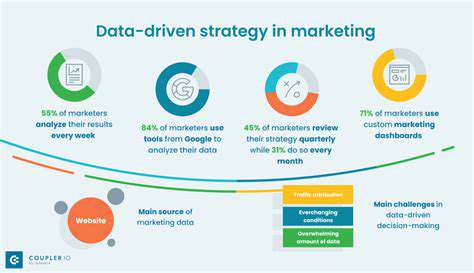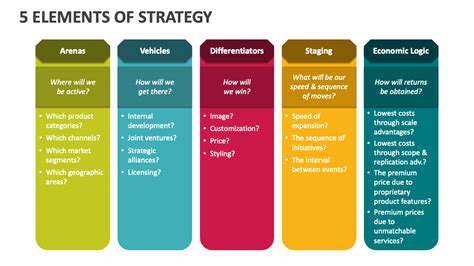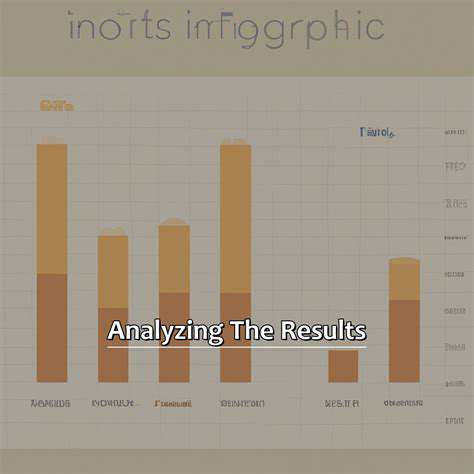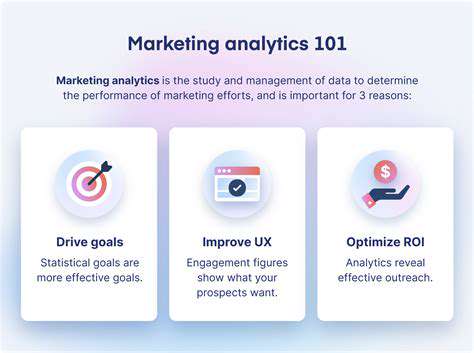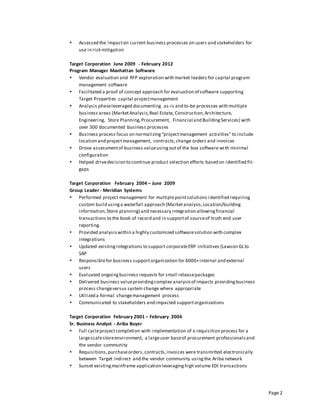The Evolution of Digital Marketing: A Historical Look
The mid-to-late 1990s saw the introduction of interstitial and pop-up ads. These ads, often disruptive and intrusive, were designed to capture attention. While they offered a way for advertisers to gain visibility, they often negatively impacted the user experience, leading to user frustration and a backlash. The proliferation of these intrusive formats created a need for more refined and user-friendly approaches to online advertising.
The prevalence of pop-up ads, often appearing unexpectedly, became a major source of contention for web users. The negative perception surrounding these disruptive formats contributed to the development of ad blockers and a greater emphasis on user experience. This period highlighted the importance of balancing advertising needs with user expectations, a critical lesson for the evolving field of online advertising.
Emerging Display Formats and the Dawn of Email Marketing
Beyond banner ads, the era saw the emergence of new display ad formats, such as rich media ads and interactive elements. These formats offered more engaging experiences for users, though they were often more complex and expensive to develop. Simultaneously, email marketing began to gain traction as a targeted advertising channel. Email allowed businesses to directly communicate with potential customers, providing an alternative method for reaching specific audiences.
Measuring and Optimizing Early Campaigns: A Critical Need
One of the significant challenges of the early online advertising era was the lack of robust measurement tools. Advertisers struggled to quantify the return on investment (ROI) of their campaigns, leading to uncertainty and inefficiencies. The need for more sophisticated metrics and analytics became increasingly apparent. As online advertising evolved, the need to track and measure campaign performance became more critical, driving the development of analytics tools and more sophisticated targeting methods.
The lack of robust data about user behavior and campaign impact made it difficult to optimize campaigns effectively. Early advertisers often relied on anecdotal evidence and intuition, which made it hard to understand what worked and what didn't. The development of more advanced tracking and analysis tools became essential to the future of the field.
The Rise of Search Engine Optimization and Paid Search (Mid-2000s - 2010s)
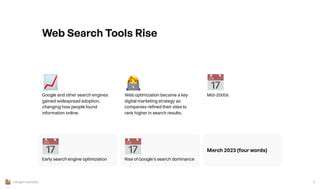
The Foundation of SEO
Search engine optimization (SEO) is more than just a collection of tactics; it's a fundamental aspect of modern digital marketing. Understanding the algorithms and ranking factors of search engines like Google is crucial for any website aiming to achieve visibility and attract organic traffic. SEO's core purpose is to enhance a website's relevance and authority in the eyes of search engines, thereby improving its position in search results. This, in turn, leads to increased brand visibility and potential customers finding your business online.
A strong SEO strategy begins with keyword research, analyzing the terms and phrases users employ when searching for products or services similar to yours. Identifying these keywords is paramount because they form the basis for optimizing content and website structure for better search engine ranking. By understanding the intent behind these keywords, you can tailor your content to address user needs effectively, leading to higher engagement and conversion rates.
Technical SEO Strategies
Technical SEO focuses on improving the technical aspects of a website to ensure search engines can effectively crawl, index, and understand the content. This involves optimizing site speed, mobile-friendliness, structured data markup, and ensuring proper sitemaps and robots.txt files are in place. A well-structured website, easily navigable by search engine crawlers, is essential for achieving high rankings. Furthermore, a fast-loading site contributes significantly to a positive user experience, and search engines reward websites that prioritize user satisfaction.
Mobile-friendliness is another critical technical element. With the increasing use of mobile devices, a responsive website design that adapts seamlessly to various screen sizes is essential. Ignoring mobile optimization can severely impact rankings and user experience, potentially driving away significant traffic. The mobile-first indexing approach of search engines emphasizes the importance of mobile optimization in achieving success.
Content Optimization for Relevance
High-quality, engaging content is the lifeblood of any successful SEO strategy. Content optimization involves crafting content that is informative, relevant, and valuable to the target audience. This includes incorporating relevant keywords naturally within the content, ensuring readability, and using compelling visuals to enhance user engagement. This process goes beyond simply stuffing keywords into the text, focusing instead on providing value to the reader.
Creating content that anticipates and addresses user needs is paramount. Understanding search intent, or the reason behind a user's search query, allows you to tailor your content to provide the most relevant and helpful information. This approach fosters user satisfaction and encourages higher dwell time on your website, a factor search engines consider when evaluating website performance.
Building Authority and Backlinks
Building website authority is a crucial aspect of SEO, demonstrating to search engines that your site is trustworthy and valuable. This involves earning backlinks from reputable websites in your industry. These backlinks act as endorsements, signaling to search engines that your content is credible and worth ranking highly. Building a robust network of high-quality backlinks is a long-term investment in establishing your website's authority in the eyes of search engines.
Earning backlinks from authoritative sources is a significant factor in improving search engine rankings. This often involves creating valuable content that other websites find worthy of linking to. Developing a content strategy that targets the needs of your audience while focusing on quality, originality, and timeliness is essential for success.
The Social Media Era (2010s - Present)
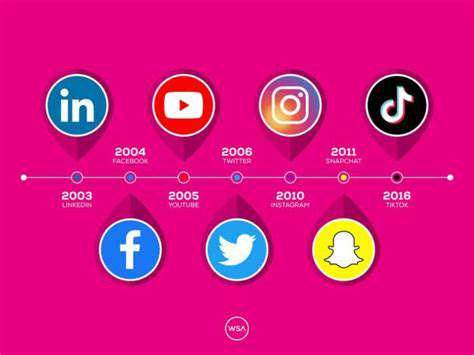
The Rise of Mobile-First Platforms
The 2010s witnessed a dramatic shift in social media usage, with mobile devices becoming the primary access point for users. This shift dramatically altered how people interacted with these platforms, fostering a culture of constant connectivity and instant updates. The proliferation of smartphones and readily available high-speed internet access facilitated this trend, making social media accessible virtually everywhere and anytime. This mobile-first era also led to the development of innovative features specifically designed for mobile experiences, such as Stories and ephemeral content, further blurring the lines between online and offline life.
The rise of mobile-first social media platforms also had a significant impact on marketing strategies. Businesses needed to adapt their approaches to reach their target audience where they were spending their time—on their phones. This necessitated a shift toward more visually engaging and interactive content, as well as a greater emphasis on real-time engagement and responsiveness. The ease of access to social media via mobile phones also fostered a sense of immediacy, requiring businesses to be prepared to respond to customer queries and feedback promptly.
The Impact on Communication and Relationships
The social media era fundamentally changed how people communicate and interact with one another. Instant messaging apps and social networking sites provided new avenues for connection, allowing people to stay in touch with friends and family across geographical boundaries. This global interconnectedness fostered new forms of community and support, often transcending traditional social structures. This shift, however, also presented challenges, as individuals grappled with the complexities of maintaining healthy relationships in a digital space.
However, the ease of communication also led to concerns about privacy, misinformation, and the potential for cyberbullying. The rapid spread of information online, often without proper verification, raised questions about the authenticity and reliability of online content. Maintaining healthy online interactions and combating harmful content became crucial for individuals and communities alike.
Social media platforms introduced new ways to build and maintain relationships, but also presented new challenges to navigate effectively.
The Evolution of Social Media Marketing
Social media marketing evolved significantly during this period, transitioning from a nascent strategy to a cornerstone of modern business practices. Marketers needed to adapt their strategies to engage with audiences on various platforms. This meant creating engaging content, building communities, and leveraging analytics to track campaign performance. The emphasis on data-driven decision-making became crucial for optimizing social media campaigns and achieving measurable results.
The rise of influencer marketing also emerged as a powerful tool, allowing brands to connect with audiences through trusted voices and personalities. This required businesses to understand the nuances of each platform and tailor their approach to resonate with specific demographics and interests.
Businesses needed to develop robust social media strategies to reach their target audience, adapt to changing trends, and engage with consumers effectively. The evolving landscape of social media demanded continuous learning and adaptation to stay relevant and successful.
The ever-changing algorithms and features on social media platforms required marketers to stay adaptable and innovative in order to maintain visibility and engagement with their target audience.
